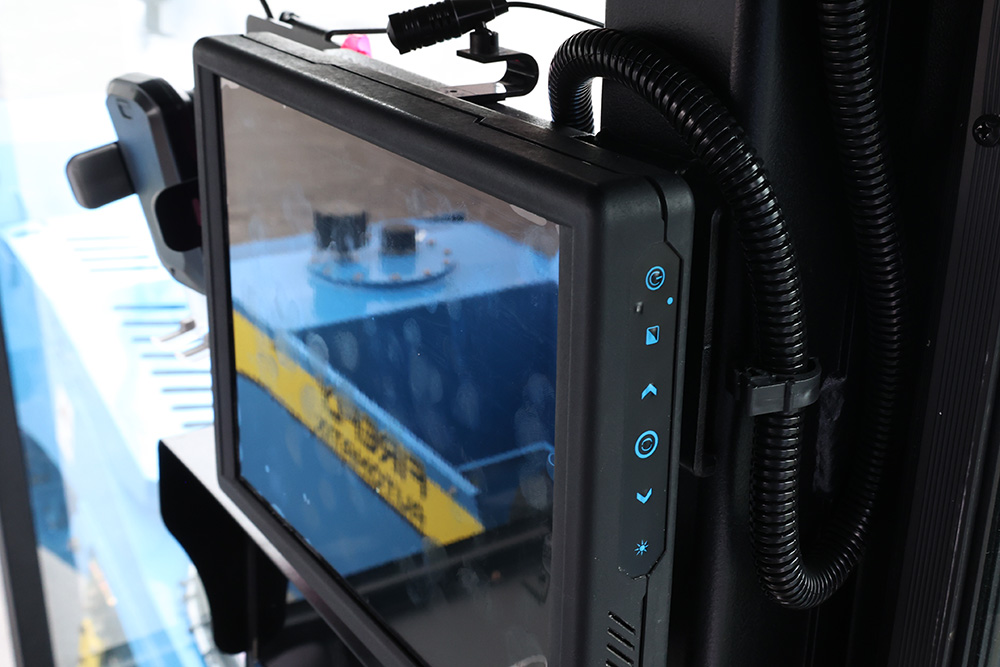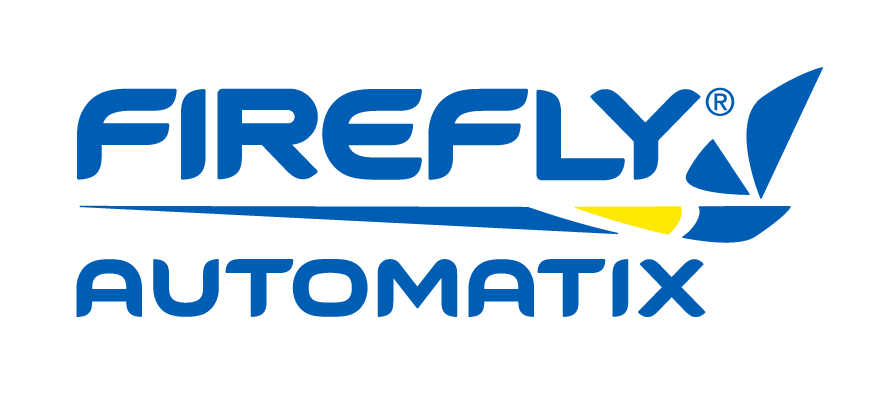Your harvester’s front battery is more than a power source. It’s the heartbeat of your machine’s controller and software systems. When this battery starts to fail, it can cause more than just slow start-ups; low voltage or unstable power can damage sensitive electronics and even corrupt software.
The good news? With proper care, you can extend battery life, avoid unnecessary downtime, and keep your harvester running smoothly year-round.

Know Your Battery
FireFly harvesters use OPTIMA® YELLOWTOP® AGM deep-cycle batteries to power the controller. AGM batteries deliver consistent, clean power, and they are built for durability. However, they still require regular checks and care to prevent damage.
The front battery’s job is critical: it supplies isolated, stable voltage to your harvester’s computers and control systems, even during engine cranking. This isolation helps prevent voltage dips that can harm controllers, amps, sensors, and other sensitive electronics.
Why Battery Health Matters
If the front battery is weak, your harvester’s control box may shut down or restart unexpectedly when the engine is off or cranked. This can require you to re-home the machine and wait through a full system boot, costing time and productivity.
Even worse, repeated low-voltage events can damage components like controllers, power supplies, displays, servo motor feedback sensors, encoders, and laser sensors. Machines with small PCs onboard are at particular risk of hard drive corruption.

For maximum uptime and reliability:
-
Check the front battery weekly.
-
Verify the battery isolation solenoid monthly to ensure it is functioning correctly.
-
Turn off the control box at the end of each day — don’t let it drain the battery.
-
Replace the control box switch LED if it burns out so operators can see when the system is still on.
-
Clean the battery box annually to remove dust and mud buildup.
-
Check and tighten connections regularly.
Storage and Seasonal Care
Short-term (3+ days)
Turn off the YELLOWTOP battery isolator in the battery box (100-amp circuit breaker).
Long-term (1+ months)
- Remove batteries and store them in a warm, dry location.
- Use a quality AGM charger or maintainer to keep voltage above 12.4V.
- Never charge a frozen battery. Allow it to thaw indoors for several days, then trickle charge slowly.
For complete guidance, see our OPTIMA Battery Winter & Seasonal Care article in the Support Portal.
Recovering a Deeply Discharged AGM Battery
If your charger won’t start, the battery voltage may be too low for it to be recognized. Never use the harvester’s alternator to recharge a dead battery; use a proper charger.
- Best Option – Use an AGM-specific charger with desulfation mode (e.g., OPTIMA Digital 1200).
- DIY Option – Connect the low battery in parallel with a fully charged one to “trick” your charger. Monitor voltage and temperature closely.
- Pro Option – Have it serviced by a battery specialist for testing and recovery. Full recovery instructions are in our OPTIMA Battery Recovery article in the Support Portal.
Proper Startup and Shutdown Procedures
Battery health is only part of the equation; correct shutdown and startup procedures help prevent damage and extend system life. The proper startup procedure differs depending on the type and version of machine you are operating.
Startup
ProSlab 155 and ProSlab 155B (machines with a small PC)
- Crank the engine.
- Turn on the control box switch.
- When the screen says READY, enable the machine.
- Raise RPM to transport speed (1800–2000 RPM).
- At harvesting location, lower RPM to cutting speed (1500–1700 RPM).
ProSlab 155C, ProSlab 160, and R300 (machines without a small PC)
- Turn on the control box switch — if the controller shuts down on startup, it’s a signal for you to check the YELLOWTOP battery and battery isolator.
- Crank the engine — if the controller shuts down when you crank the engine, it’s a signal for you to check the YELLOWTOP battery and isolator.
- When the screen says READY, enable the machine.
- Raise RPM to transport speed (1800–2000 RPM).
- At harvesting location, lower RPM to cutting speed (1500–1700 RPM).
Shutdown
-
Return to storage location at transport RPM.
-
Lower to idle (~850 RPM).
-
Disable the machine (wait 1–2 minutes for high voltage system to drain and engine to cool down).
-
Turn engine key to “Off” — if the controller shuts down when turning off the engine, it’s a signal for you to check the YELLOWTOP battery.
-
Turn off the control box.
These sequences serve as a daily battery check. Please note that the controller should be able to run for at least 15 minutes with the engine off without issue if the YELLOWTOP battery is in good health.
*Note on RPMs for machines powered by a JCB Tier 4 engine: The frequency of exhaust gas recirculation (EGR) cooler cleaning depends on engine load. Engines that run under heavier loads generate enough heat to burn off soot more effectively, reducing the need for cleaning. Lighter-duty operation, however, allows soot to build up more quickly. To prevent clogging, clean the EGR cooler every 750–1500 hours, depending on how hard the engine is worked.
In Short
A healthy front battery protects your harvester’s electronics, prevents costly downtime, and keeps your system running at peak performance. With weekly checks, smart shutdown habits, and seasonal care, you can avoid the cascading problems a bad battery can create.
Still have questions?
No problem — our Service Team is ready to answer any remaining questions you may have. Give us a call or reach out through our support portal.

